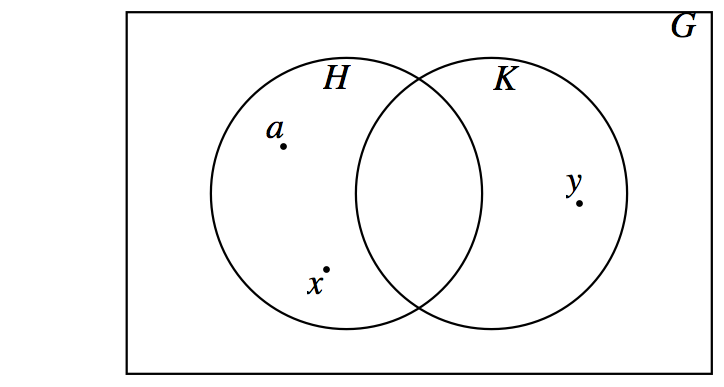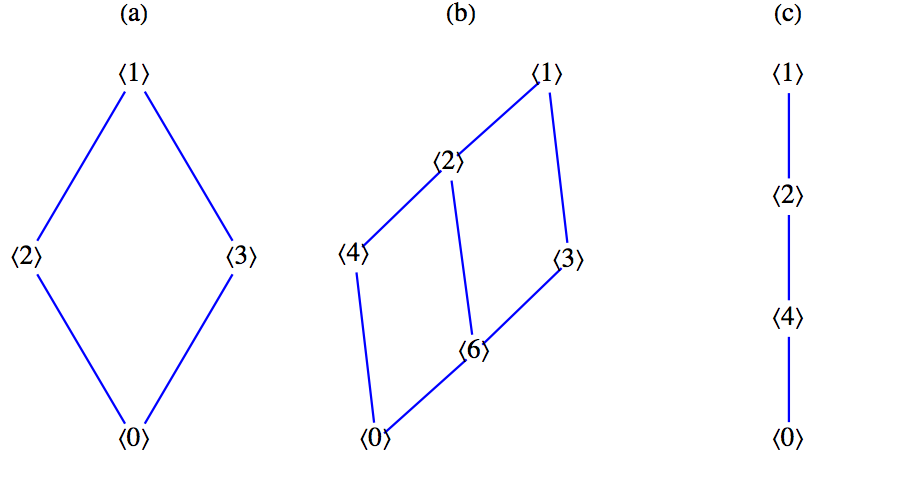For the remainder of this section, we will concentrate on the properties of subgroups. The first order of business is to establish a systematic way of determining whether a subset of a group is a subgroup.
Our proof consists of verifying that if the three properties above are true, then all the axioms of a group are true for \([H ; *]\text{.}\) By Condition (a), \(*\) can be considered an operation on \(H\text{.}\) The associative, identity, and inverse properties are the axioms that are needed. The identity and inverse properties are true by conditions (b) and (c), respectively, leaving only the associative property. Since, \([G; *]\) is a group, \(a * (b * c) = (a * b) * c\) for all \(a, b, c \in G\text{.}\) Certainly, if this equation is true for all choices of three elements from \(G\text{,}\) it will be true for all choices of three elements from \(H\text{,}\) since \(H\) is a subset of \(G\text{.}\)
For every group with at least two elements, there are at least two subgroups: they are the whole group and \(\{e\}\text{.}\) Since these two are automatic, they are not considered very interesting and are called the improper subgroups of the group; \(\{e\}\) is sometimes referred to as the trivial subgroup. All other subgroups, if there are any, are called proper subgroups.
Theorem 11.5.5. Condition for a Subgroup of Finite Group.
Given that \([G; * ]\) is a finite group and \(H\) is a nonempty subset of \(G\text{,}\) if \(H\) is closed under \(*\) , then \(H\) is a subgroup of \(G\text{.}\)



